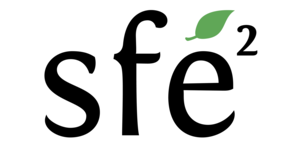If and how natural populations will adapt or go extinct is expected to depend on the rate of the environmental change they face. When populations depend on mutational input to adapt, such as most unicellular species, the slower the rate of environmental change the more likely adaptation is. However, most natural populations depend for adaptation on standing genetic variation and on many different quantitative trait loci (QTL) already present and segregating, that is, adaptation to changing environments is almost invariably polygenic.
It has been difficult to relate a theoretical understanding of polygenic adaptation to changing environments with the genome-wide association (GWA) data being generated from extinct and extant natural populations of animals and plants. On the one hand, theory usually models natural selection in changing environments as a change in the rate of a given trait’s optimum without the empirical understanding of what is a trait “optimum”. This is because organisms are not just atomized collections of independent traits and a given trait’s direction and magnitude of response to selection might be due to genetic or environmental correlations with unmeasured traits. On the other hand, the QTL allele frequency dynamics that can now be obtained from GWA studies are difficult to relate to the fundamental properties of polygenic adaptation in changing environments.
One of these properties is pleiotropy, which refers to a QTL allele affecting more than one trait, and thus of consequence to the genetic covariance between traits when there is variation among individuals. Genetic covariances will distort the direction of trait responses, in particular, if they are not aligned with the directions of selection. The amount of genetic covariance between traits also affects the magnitude of trait responses. Another genetic property of polygenic adaptation is redundancy, which refers to many QTL alleles affecting the same trait. Under a moving trait optimum model, allele frequency dynamics will be a function of their initial frequency and relative trait effects because directional selection predominates. Yet as the trait optimum is reached, allelic effects will approach neutrality and theory predicts the fixation of some alleles and reversal of the sign of selection at other alleles because of stabilizing selection in this second period.
The role of pleiotropy and redundancy during polygenic adaptation to changing environments is unknown and remains to be explored experimentally. The primary goal of this project is to perform an experimental test of polygenic adaptation to changing environments, and in doing so help improve evolutionary theory.
We are looking for an M2 student who will work on genomic data obtained from experimental evolution performed over more than 200 generations in the host laboratory. The student will conduct GWA for locomotion behavior traits, as well as define multivariate selection in the target environment of the experiments. The data have been collected (phenotype data and genome-sequence data of the host’s CeMEE mapping panel), such that the student’s work will consist of developing models for mapping pleiotropic QTL alleles. The student will integrate QTL mapping results with the population genomic data to describe QTL allele frequency dynamics among the several experimental treatments. Data analysis may also involve numerical simulations of experimental evolution together with machine learning methods.
Le contenu de cette offre est la responsabilité de ses auteurs. Pour toute question relative à cette offre en particulier (date, lieu, mode de candidature, etc.), merci de les contacter directement. Un email de contact est disponible: francois.mallard@bio.ens.psl.eu
Pour toute autre question, vous pouvez contacter sfecodiff@sfecologie.org.

Commentaires récents